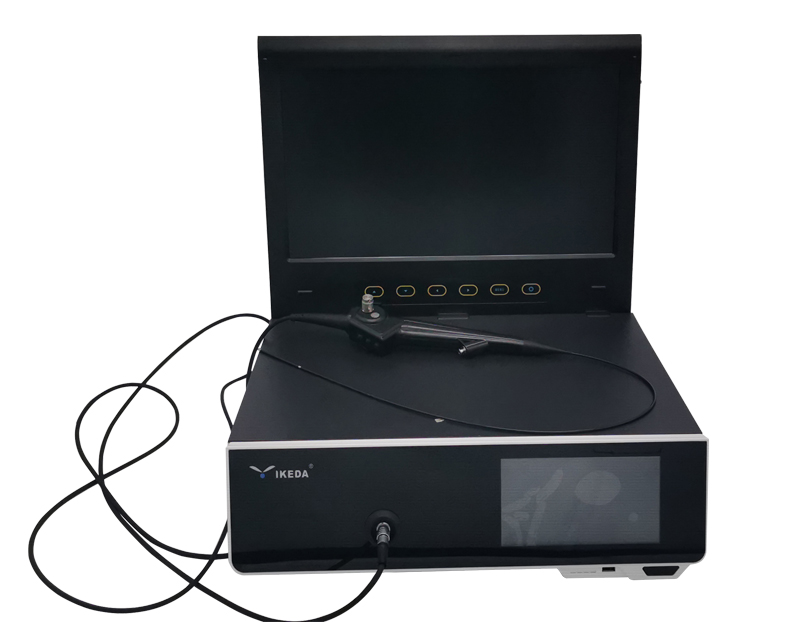Industrial endoscopes are divided into three types: optical rigid endoscopes, optical fiber endoscopes, and video electronic endoscopes.

1. Optical rigid endoscope: The main structure is imaging objective lens, transfer lens, light guide, eyepiece, and outer tube; the processing technology level of optical lens determines the technical level of rigid endoscope;
2. Fiber optic endoscope: The main structure is an optical fiber image transmission bundle; the material and process of the optical fiber determine the clarity, resolution and service life of the product;
3. Video electronic endoscope: The main structure is the endoscope, the monitor, the TV information system center and the auxiliary device. It is characterized by using CCD or COMS photoelectric conversion element to convert the optical signal into the electrical signal, and display the image on the monitor.
1. Video electronic endoscope:
Video electronic endoscope is a new type of non-destructive testing instrument for internal quality inspection, detection and analysis of cavity integrating light, machine and electricity. The use of advanced high-resolution digital color CCD photoelectric coupling devices ensures the clear and vivid images of the video endoscope; the high-brightness LED lighting source avoids the attenuation of long-distance transmission brightness and ensures that sufficient light source is provided for the video endoscope ; Industrial-grade LCD monitors can realize real-time monitoring of the equipment to be inspected, with high-definition pictures and wide observation angles, which improve the inspection quality and reduce the work intensity of the operator; at the same time, it has a built-in storage module and SD card storage, which can Check the image to perform image taking, video recording, picture viewing, and deletion operations, effectively realizing the work of saving and recording images.
Purpose and scope of application:
Video electronic endoscopes are mainly used for toxic, harmful and small spaces that cannot be reached by routine inspectors. It can conveniently and effectively deal with internal corrosion, cracks, welding conditions, complex pipeline foreign bodies, internal processing conditions of cast workpieces, and zero Carry out detailed and comprehensive inspections on parts such as wear and tear. At the same time, it has also been widely used in the inspection of special equipment such as machinery manufacturing, petrochemical industry, aerospace, power and power construction, railway and shipbuilding, automobile industry, engineering construction, boiler pressure vessels, military reconnaissance and other special equipment inspection fields.
2. Fiber optic endoscope:
Fiber-optic endoscope adopts the principle of optical fiber to transmit light and image. It can observe high temperature, toxic, nuclear radiation and inspection in places that cannot be observed by the human eye through the eyepiece. It can easily and quickly inspect various machinery, equipment, confidential casting, The inside of the assembled object can be effectively inspected without disassembly or destruction of the assembly. This product can also be connected to cameras, video cameras, monitors, etc. through a conversion interface to form a camera, video and image processing system, so that inspection, recording, storage, and analysis can be realized. Uses and scope of application: Mainly used to check the small apertures in precision machinery manufacturing, petrochemical, military manufacturing, police equipment, automobile manufacturing, small equipment, the internal conditions of small gaps, mechanical gear parts wear, looseness, oil nozzles and oil pumps quality inspection.
3. Optical rigid endoscope:
The rigid optical endoscope uses an optical lens for imaging, a direct-view mirror with optical fiber to transmit light, and a small rigid insertion tube that can enter a narrow gap. The insertion tube with different viewing angles can easily check different holes and seams.